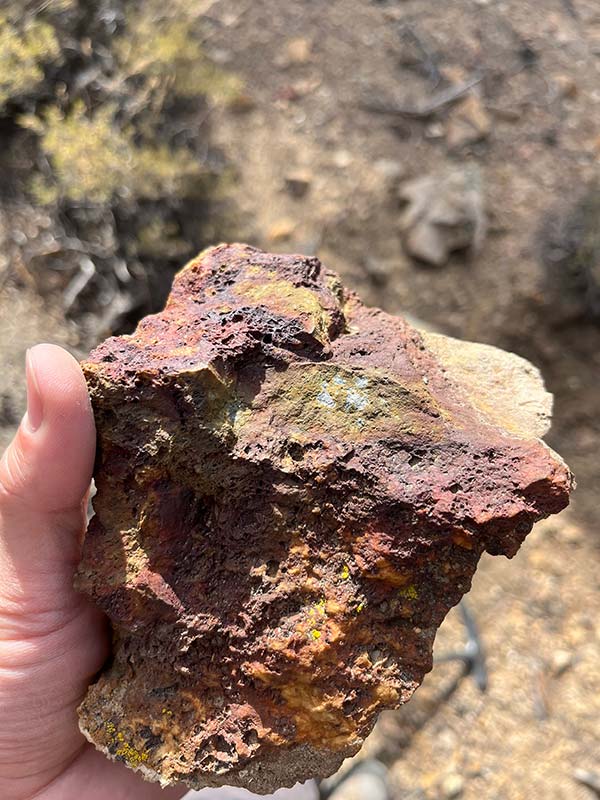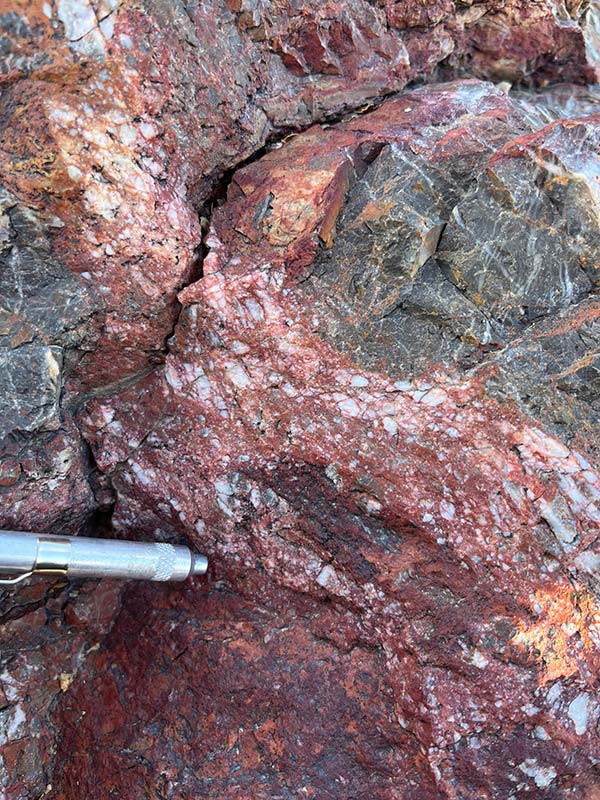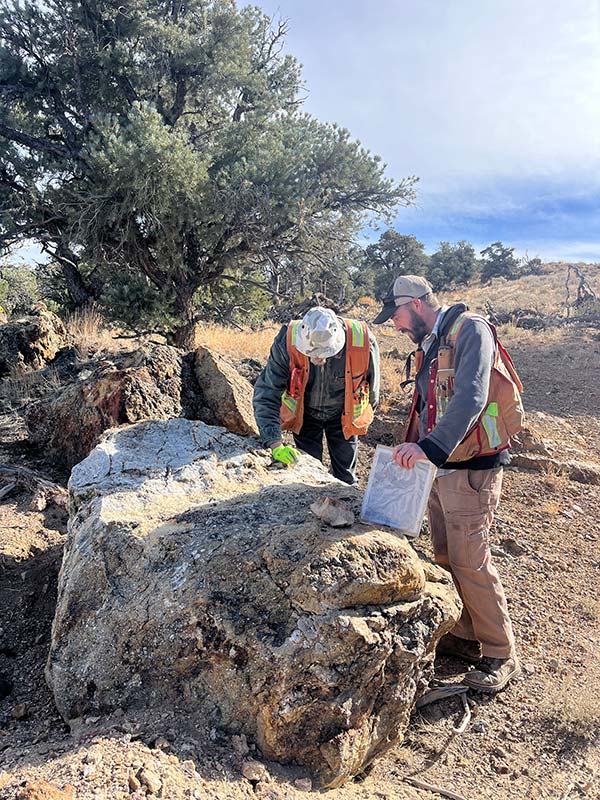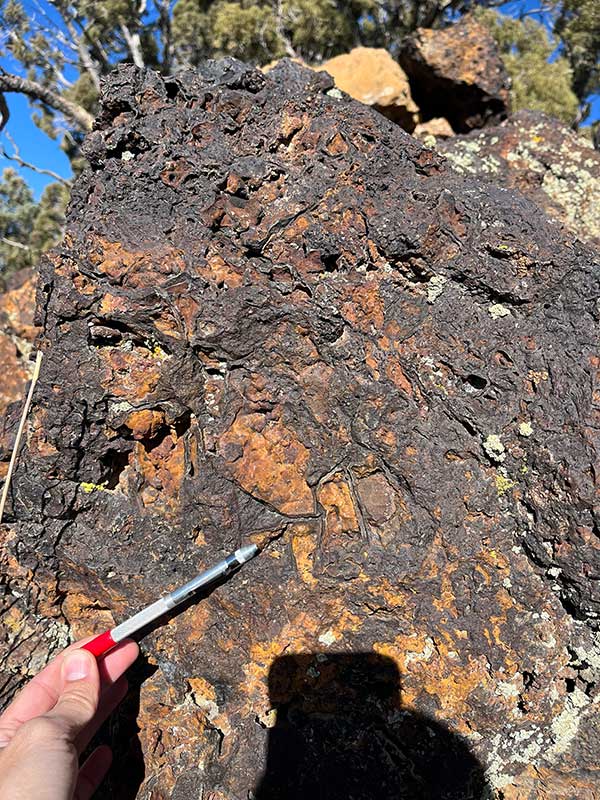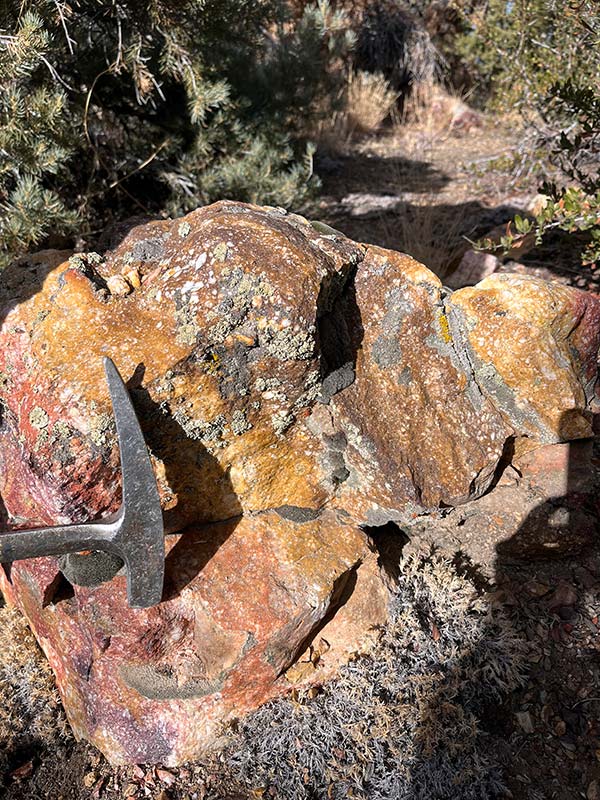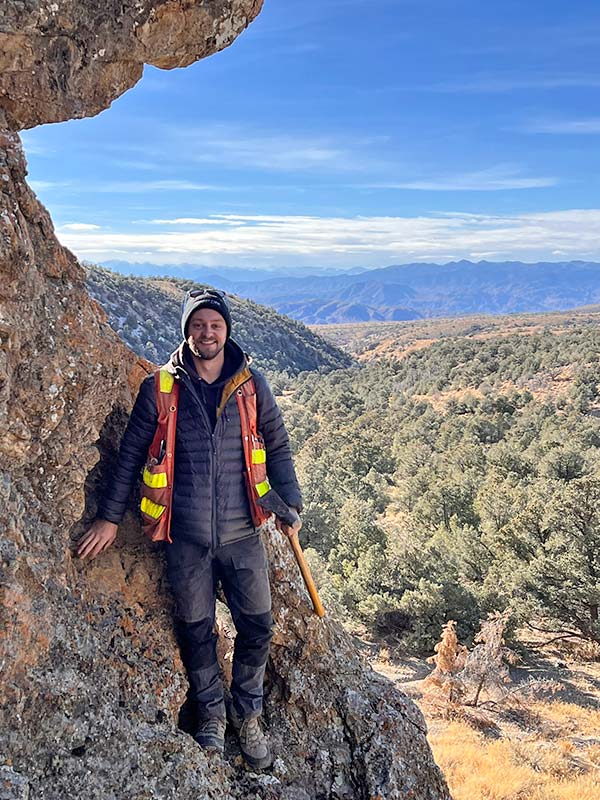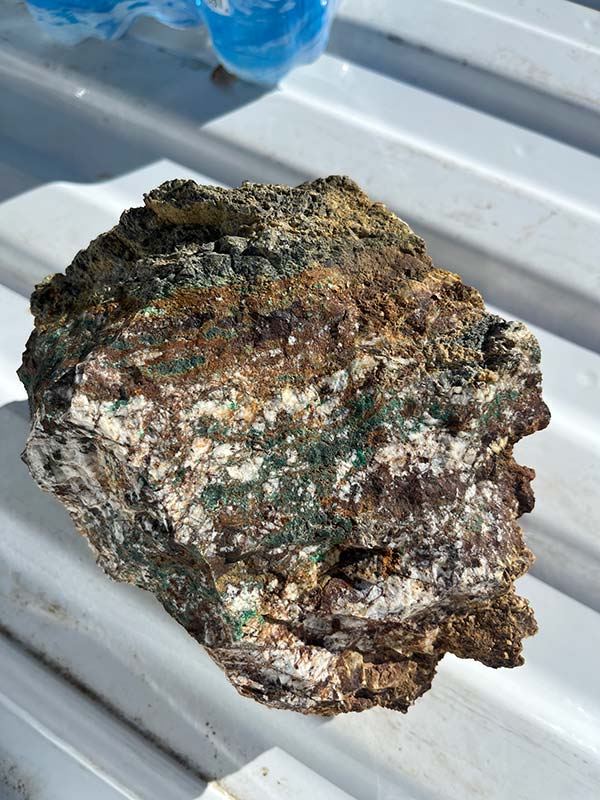The Excelsior Springs Project
Shallow Oxide Gold Discovery in Nevada’s Walker Lane
Project Overview
The Excelsior Springs project is located ~70 km Southwest of the town of Tonopah, Nevada (Fig. 1). Tonopah is a full-service, historic gold-mining town with active gold and silver production and exploration.
The 1,574 ha Excelsior Springs property has year-round road access maintained by the state and connects directly to HWY NV-266.
It is strategically located in the prolific Walker Lane district of Nevada, which has produced more than 40 Moz of gold.
Most exploration work has focused on the Buster mine, which is a historic gold mine that produced up to 19,200 oz Au. The rest of the property is largely underexplored despite the presence of widespread alteration and anomalous gold mineralization in outcrop, as well as sporadic historical artisanal workings scattered throughout.
The Walker Lane District continues to be at the forefront of gold and silver exploration and production, with numerous early to advanced-stage projects advancing towards production.
Fig. 1: Map of Nevada showing the location of the Excelsior Springs project relative to other important gold and silver exploration projects and mines in the Walker Lane District.
The Excelsior Springs project is strategically located close to major gold production and exploration sites (Fig. 1):
- Expanded Silicon / North Bullfrog (AngloGold Ashanti)
- 6 Moz Au (M&I+I)
- First production expected Q4 2025
- Goldfield (Centerra Gold)
- Acquired for US$200M in 2022
- Initial 2024 resource of 706 Koz Au (M&I)
- Tonopah West (Blackrock Silver Corp)
- 100 Moz AgEq (Inferred)
- Round Mountain Mine (Kinross)
- >230 Koz AuEq produced annually
- Kinross actively exploring ground adjacent to Excelsior Springs
Geology
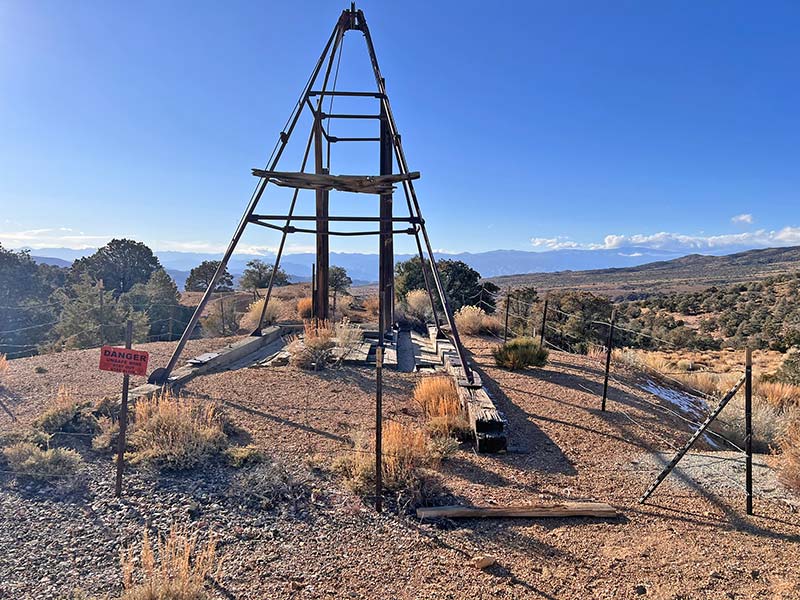
The Excelsior Springs Project
The Excelsior Springs project is situated in the Palmetto Mining District along the eastern margin of the Walker Lane Tectonic Zone. Sedimentary rocks in the area are dominated by late Proterozoic and early Paleozoic clastic and carbonate rocks.
The convergence of a volcanic island arc and the Robers Mountain Terrane with the Laurentian continental shelf led resulted in the Antler Orogeny during the late Devonian to early Mississippian periods (~375 to 320 Ma). As a result, deep-water sediments of the Roberts Mountain allochthon were thrust east- to southeastward over shallow-water carbonate rocks.
These carbonate platform sequences are generally folded and faulted. The region was subsequently intruded by many Mesozoic-aged batholiths and subject to Basin and Range extension and associated volcanism. Lastly, the area then underwent a transition to transpressional tectonics associated with the Walker Lane Tectonic Zone.

Figs. 2A,B: (A) Typical, thin- to medium-bedded unaltered limestone with silty and cherty interbeds; (B) Intense hydrothermal alteration in limestone breccia. Decalcified, partially silicified with limonite, hematite, and jarosite boxworks.
Sedimentary rocks are the dominant rock type at Excelsior Springs and consist of Ordovician (Palmetto Formation), Cambrian (Emigrant and Harkless Formations), and upper Proterozoic (Deep Spring Formation) sequences.
These formations comprise a range of sedimentary rock types including quartzites, cherts, argillites, shales, limestones, dolostones, and siltstones. The sedimentary rocks are commonly folded and faulted and often hydrothermally altered.
Limestone units are the most strongly altered sedimentary rocks on the property and, in some cases, form broad alteration zones several hundred meters in length. The limestone units are often decalcified and silicified and alter to a mix of iron oxides and sulfates (Figs. 2A,B).

Figs. 3A,B: (A) Sodic-altered quartz-eye felsic intrusive with minor disseminated pyrite; (B) Sodic-altered quartz-eye felsic intrusive with phyllic overprint cut by sheeted quartz veins with associated pyrite.
Numerous volcanic and intrusive rock types are present at Excelsior Springs including felsic (rhyolite, granodiorite, quartz monzonite) and intermediate varieties (andesite, diorite). These units generally appear as small plug-like features in outcrop, however rare outcrops of felsic rock occur for hundreds of meters on surface.
Felsic intrusive rocks generally exhibit a sodic-calcic alteration that may be overprinted by phyllic alteration with associated disseminated pyrite and thin sheeted quartz veinlets. Endoskarn is commonly observed in andesite rocks. The intrusive rocks at Excelsior Springs are thought to be either Cretaceous or Jurassic in age, however geochronology work is needed to confirm this (Figs. 3A,B).

Figs. 4A,B: (A) Red to brown coloured diatreme breccia characterized by several flow bands with varying proportions of white quartz clasts; (B) Beige to brown coloured diatreme breccia showing distinct flow bands containing black chert clasts next to bands containing only white quartz clasts.
Diatreme breccias are an important rock type only recently recognized at Excelsior Springs and generally occur in proximity to intrusive units.
The diatreme breccias are reddish-brown to grey in appearance and commonly exhibit banding and crack-seal textures related to violent fluid injection.
The groundmass of these breccias is highly milled and siliceous and often contains milky-white quartz clasts that have been broken and re-sealed, as well as various sedimentary rock clasts.
The diatreme breccias are generally found as local boulders up to several meters in diameter that generally occur in clusters (Figs. 4A,B).
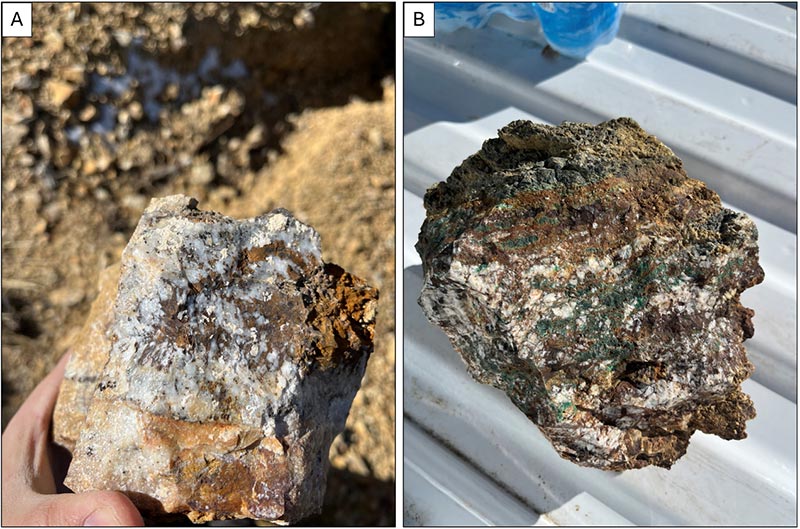
Figs. 5A,B: (A) ~10 cm quartz-pyrite-galena vein composed of an outer margin of quartz crystals oriented perpendicular to the vein wall and a vuggy oxidized core; (B) Hydrothermal breccia composed of angular white quartz clasts that have been auto-brecciated by an iron- and copper-rich fluid. Copper is now present in this sample as the bright green Cu-oxide mineral, malachite.
Quartz-carbonate veins are another important rock type found on the property as they can be host to high-grade gold mineralization. Veins found in outcrop are generally between 10 cm – 1 m in width and can be traced for several meters.
The veins are mainly composed of quartz with accessory fine- to coarse grained pyrite and galena and rarely contain high-grade copper (found as malachite).
The quartz-carbonate veins generally have an east-west strike and are steeply dipping to the south and/or north (Figs. 5A,B).
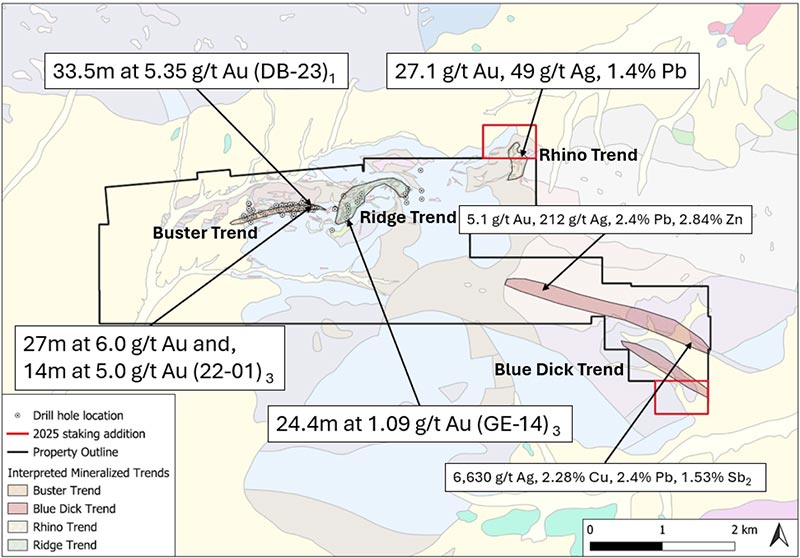
Fig. 6: Map of the Excelsior Springs project highlighting the various mineralized trends, historic drilling, additional staking, and recent sampling completed by Athena Gold Corp in November 2024.
Buster Trend
The focus on mineralization at Excelsior Springs has largely been on the historic past-producing Buster mine, which produced up to 19,200 oz Au (Fig. 6). Mineralization at Buster comprises stacked mesothermal quartz-pyrite veins hosting high-grade gold mineralization. In 2023, Athena Gold stepped out approximately 400 m to the east of the Buster mine and intersected 5.35 g/t Au over 33.5 m, which is the best-known drill result to-date at Excelsior Springs (Fig. 3). Importantly, this result indicates there is potential to delineate ~400 m strike length of gold mineralization between the Buster mine and the step out area (now collectively referred to as the Buster Trend).
Ridge and Rhino Trends
Collectively, the Ridge and Rhino Trends comprise a newly recognized exploration target at Excelsior Springs. These trends each comprise broad areas of intense hydrothermal alteration and associated gold mineralization in the host sedimentary rocks enveloping intrusive units and diatreme breccias that span for several hundred meters (Fig. 6). These trends have a stronger intrusive geochemical signature compared to the mesothermal vein-style of mineralization at the Buster Trend and will be explored as bulk-tonnage targets with potential for local high-grade mineralization. There has already been success at the Ridge Zone, where drilling intersected 1.09 g/t Au over 24.4 m in a silicified breccia surrounding a felsic intrusive unit. Other drilling in the northeast of the Ridge Trend intersected 0.1 g/t Au over 202 m and showed pathfinder geochemical signatures indicating proximity to a potential causative intrusion. The Rhino Trend is a newly identified area that returned grab samples up to 27 g/t Au and 49 g/t Ag within a broader zone of anomalous gold mineralization from a recent field mapping and sampling program in November 2024. Athena has recently completed additional staking that captures an extension of the Rhino Trend based on the success of the field sampling and mapping in this area.
Blue Dick Trends
The Blue Dick Trend comprises the southeastern portion of the Excelsior Springs property and encompasses the historic Blue Dick silver mine, which was recently acquired by Athena Gold in 2024 (Fig. 6). The Blue Dick area represents a series of Au-Ag-Cu-Pb-Sb-Zn epithermal-style vein systems. Several historic workings are documented in the area including the Blue Dick Mine; however, no documented drilling has been conducted here. In November of 2024, sampling done by Athena returned grades up to 6,630 g/t Ag, 2.28% Cu, 2.4% Pb, and 1.53% Sb along with 5.1 g/t Au, 212 g/t Ag, 2.4% Pb, and 2.84% Zn. Recently completed staking in 2025 expanded the Blue Dick trend to capture historic high-grade samples.
Exploration
Past exploration work at Excelsior Springs has primarily focused on the Buster mine despite the presence of widespread alteration and anomalous gold mineralization elsewhere on the property (now referred to as the Ridge and Rhino Trends).
Recent work completed by Athena has focused on detailed mapping and sampling in order to gain a strong understanding of the property geology.
This work has resulted in the important recognition of bulk-tonnage style targets on the property (now referred to as the Ridge and Rhino Trends) that have become high-priority follow-up areas.
Athena also plans to continue building on the recent drilling success in the Buster Trend, as well as following up on the high-grade silver, antimony, and gold occurrences in the Blue Dick Trend.


